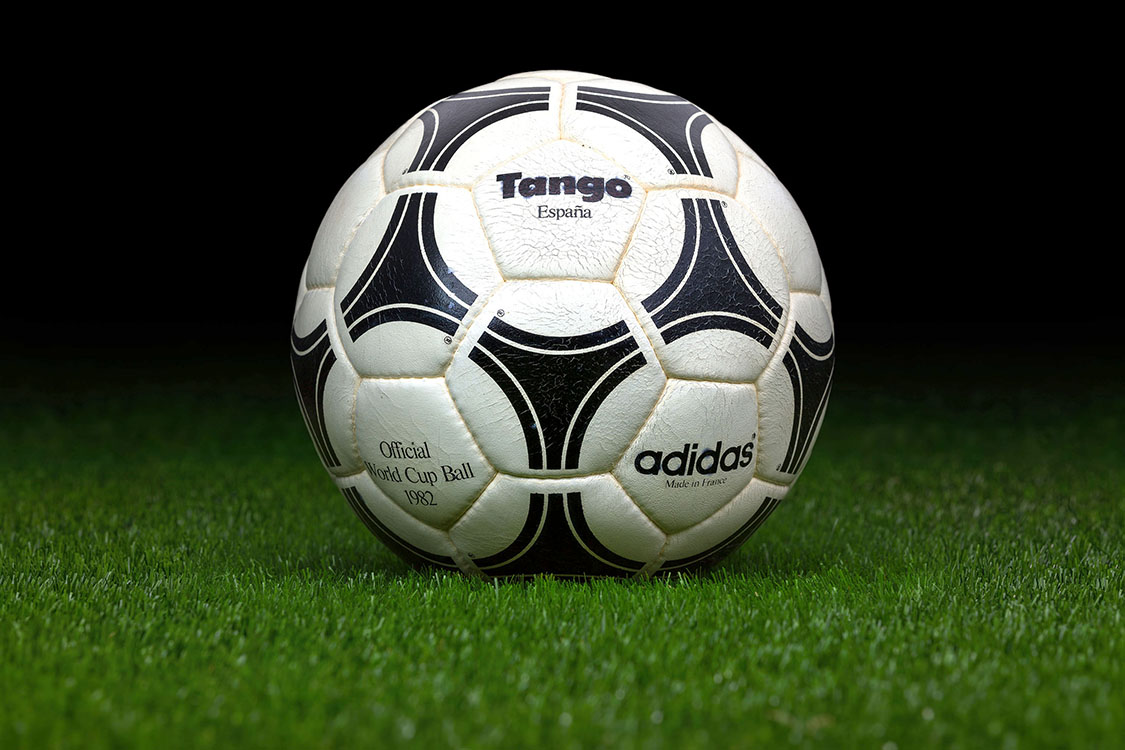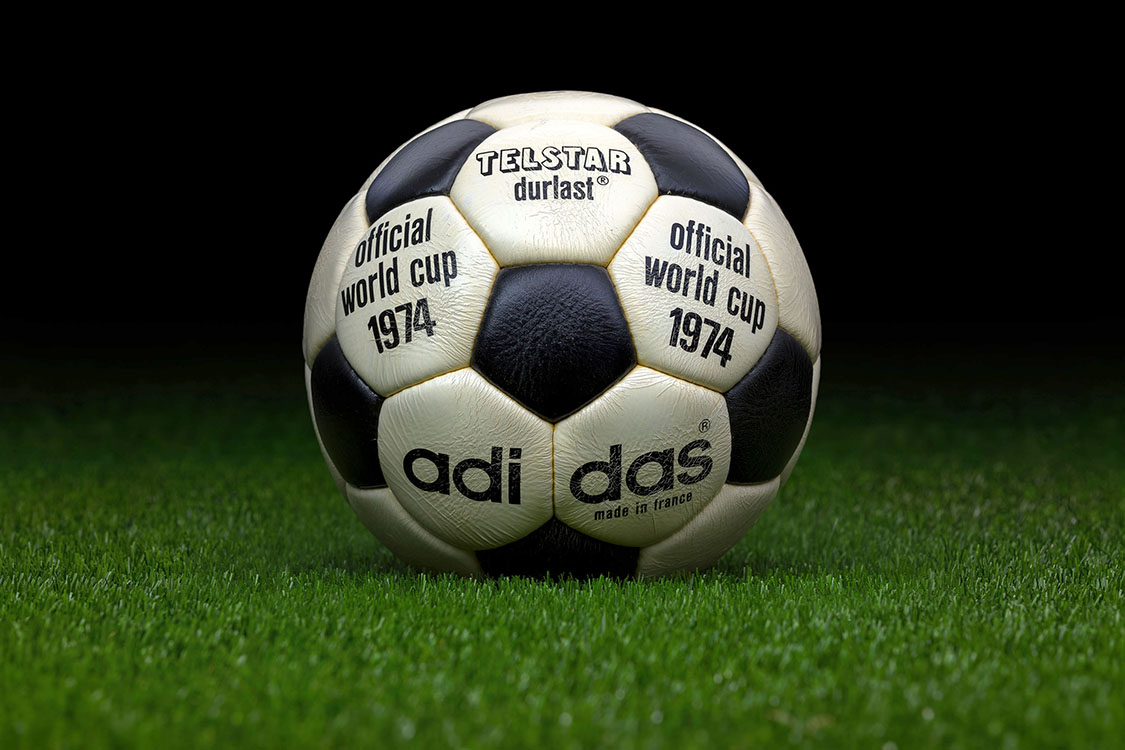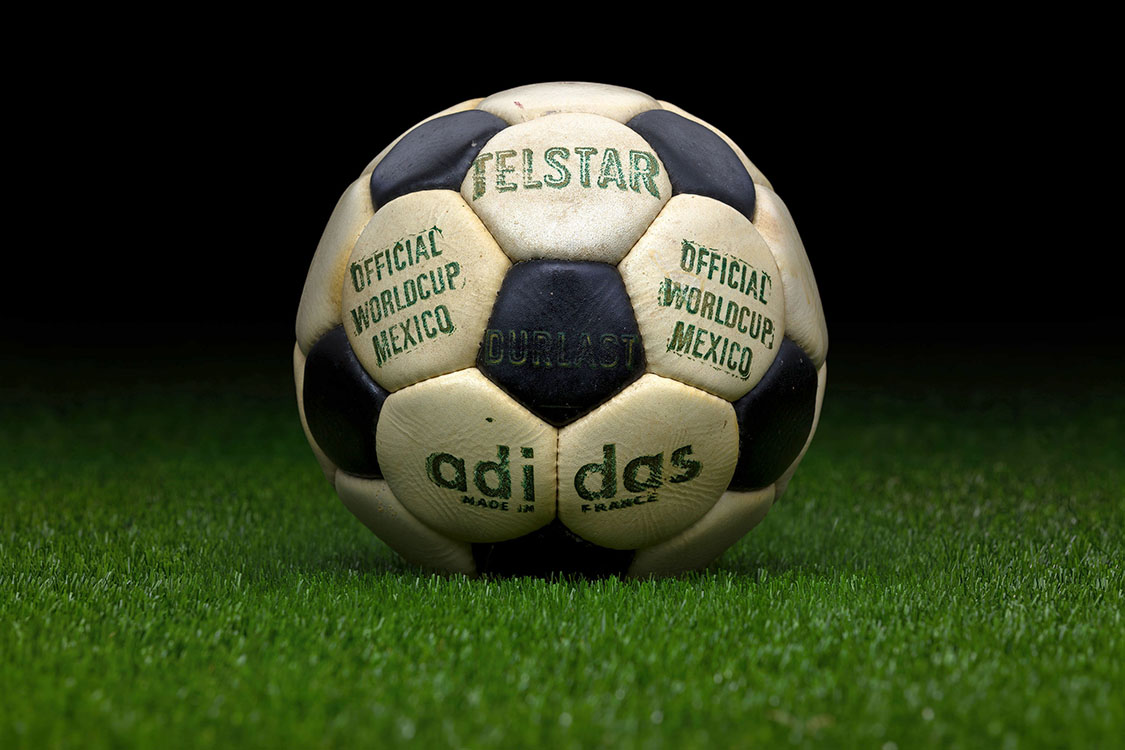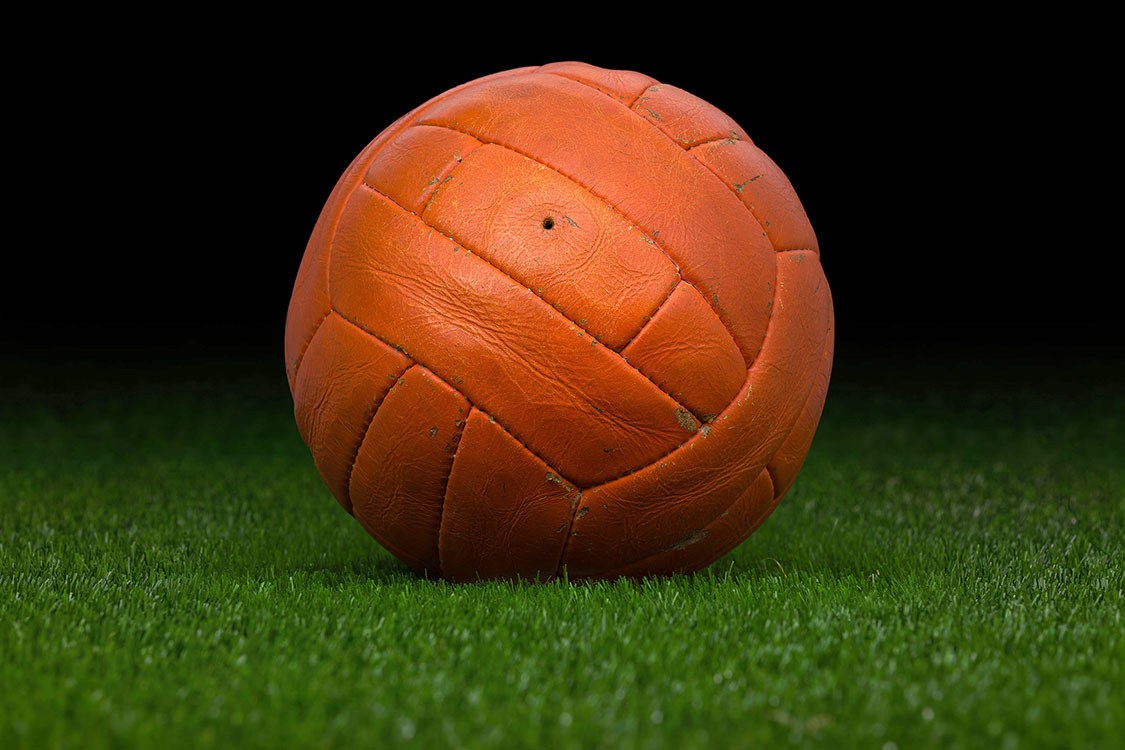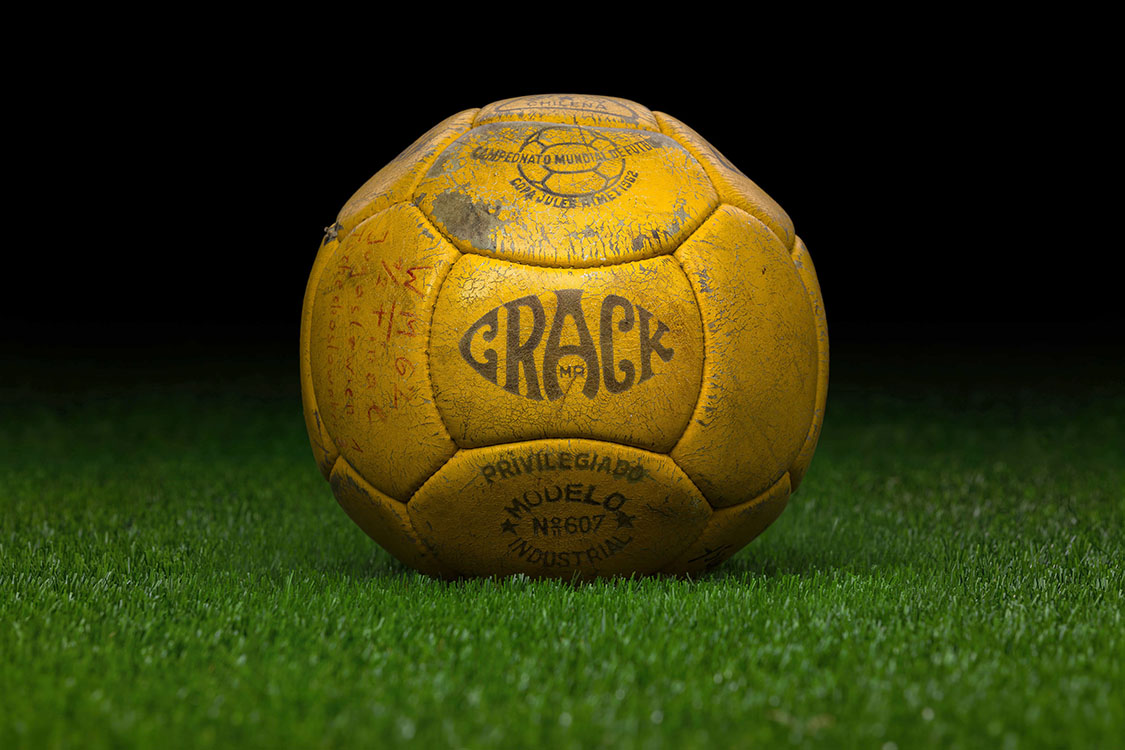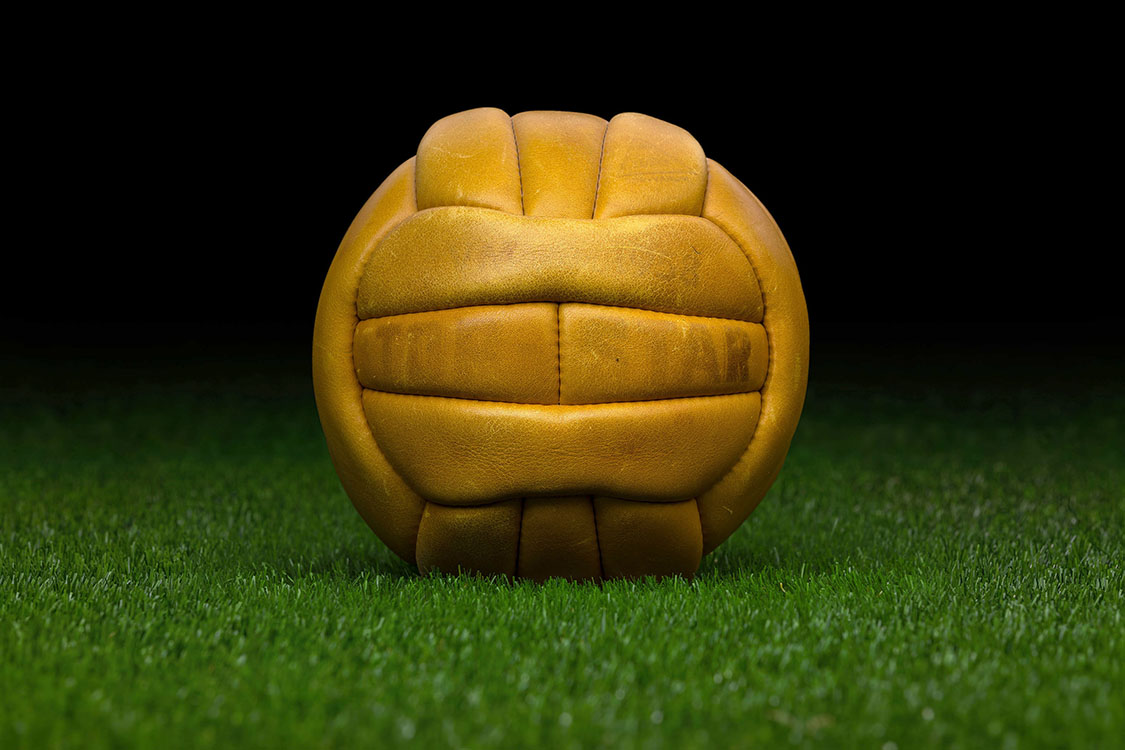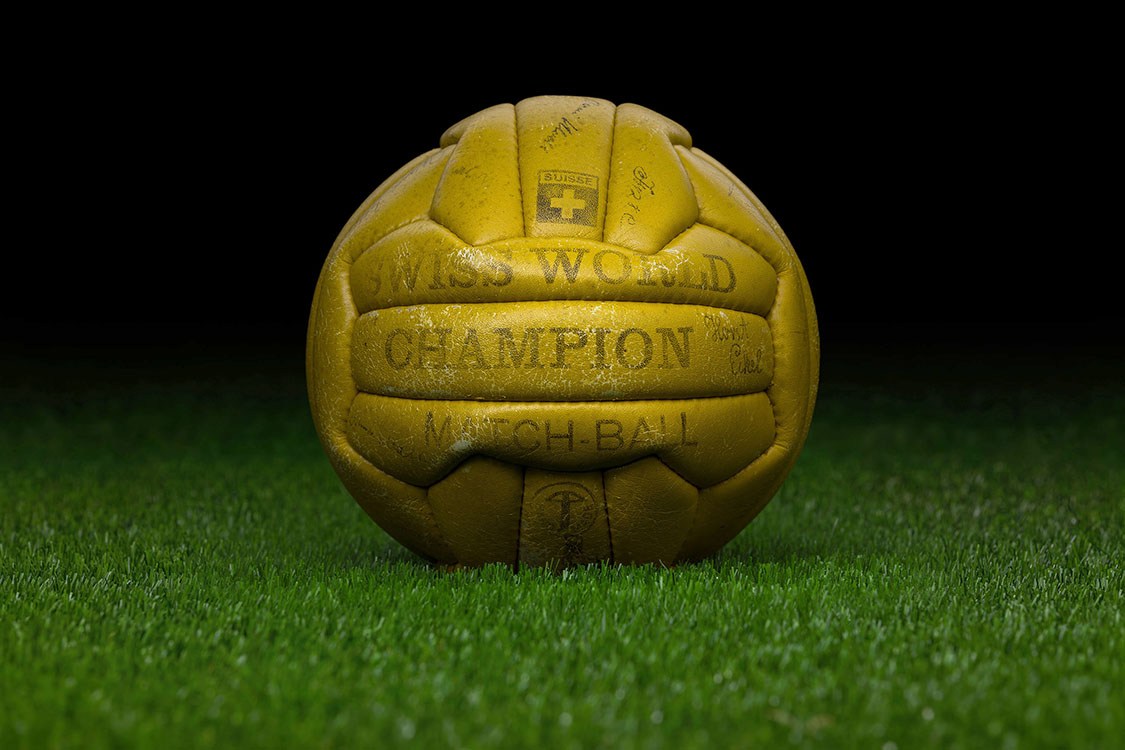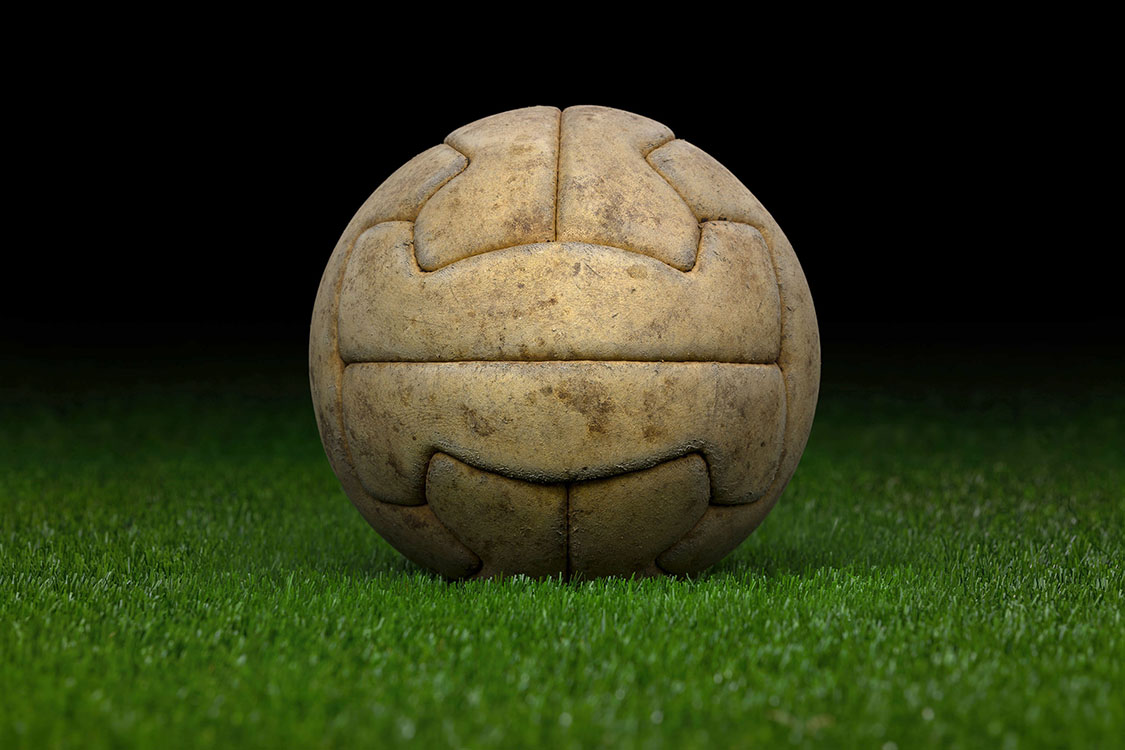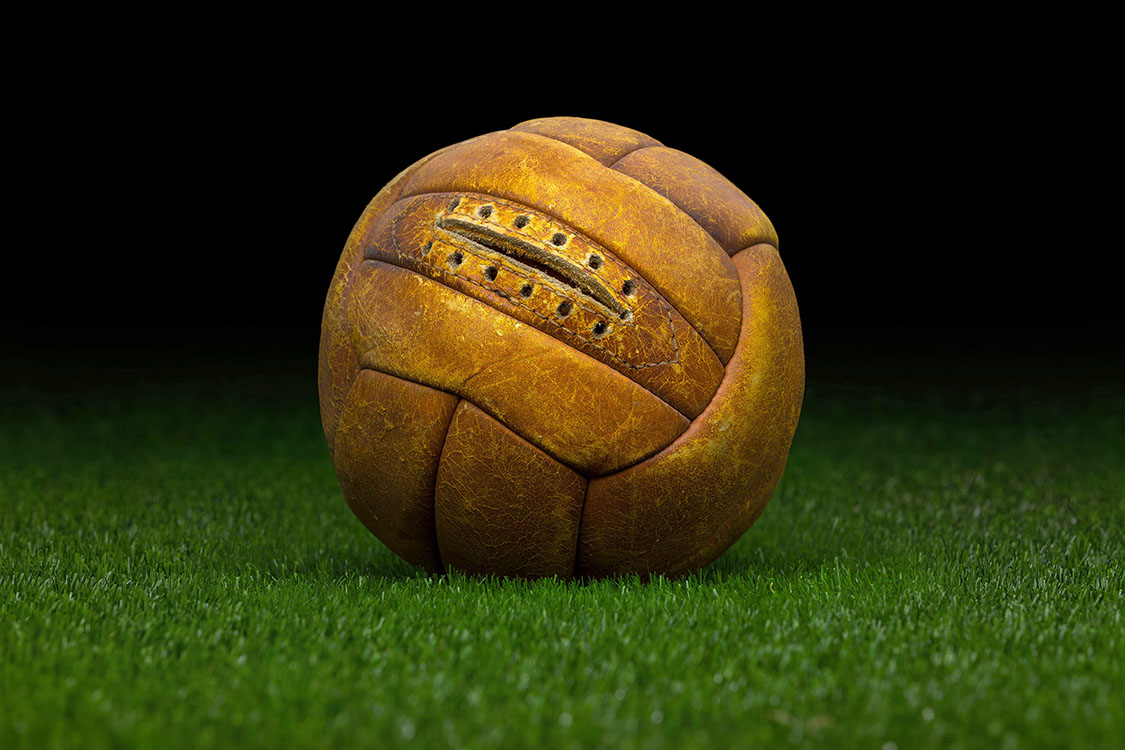Due to the indisputable success of the Tango in the 1978 World Cup and the 1980 Euro Cup, Adidas did not design and produce a revolutionary new ball for the Spanish World Cup in 1982. Instead they made a ball called Tango España, with only minor changes from its predecessors. This ball was the first Adidas World Cup ball to be name inspired by the host country. The ball was almost identical to the previous Tango. It was once again composed of 32 hand sewn panels, with the same black and white Tango design: the curved triangles were printed on every hexagon, which formed circles around the 12 pentagonal panels, giving the ball a great visual illusion of 12 identical circles.
Content courtesy of Worldcupballs.info
